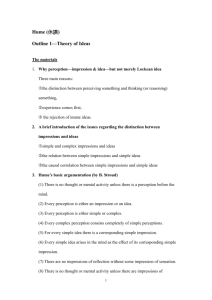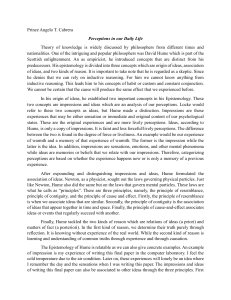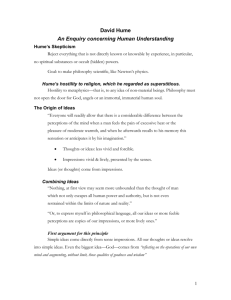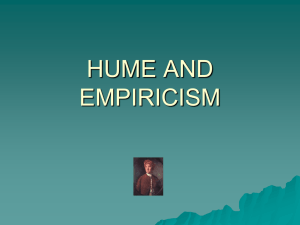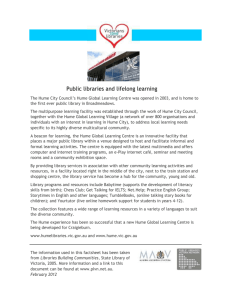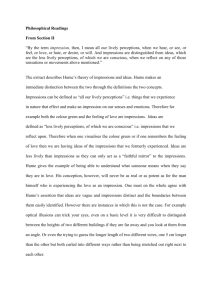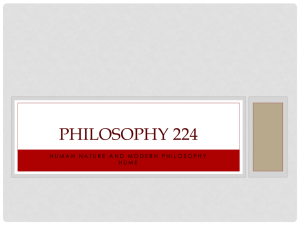Hume`s Radical Empiricism: on the origin of ideas and the semantic
advertisement
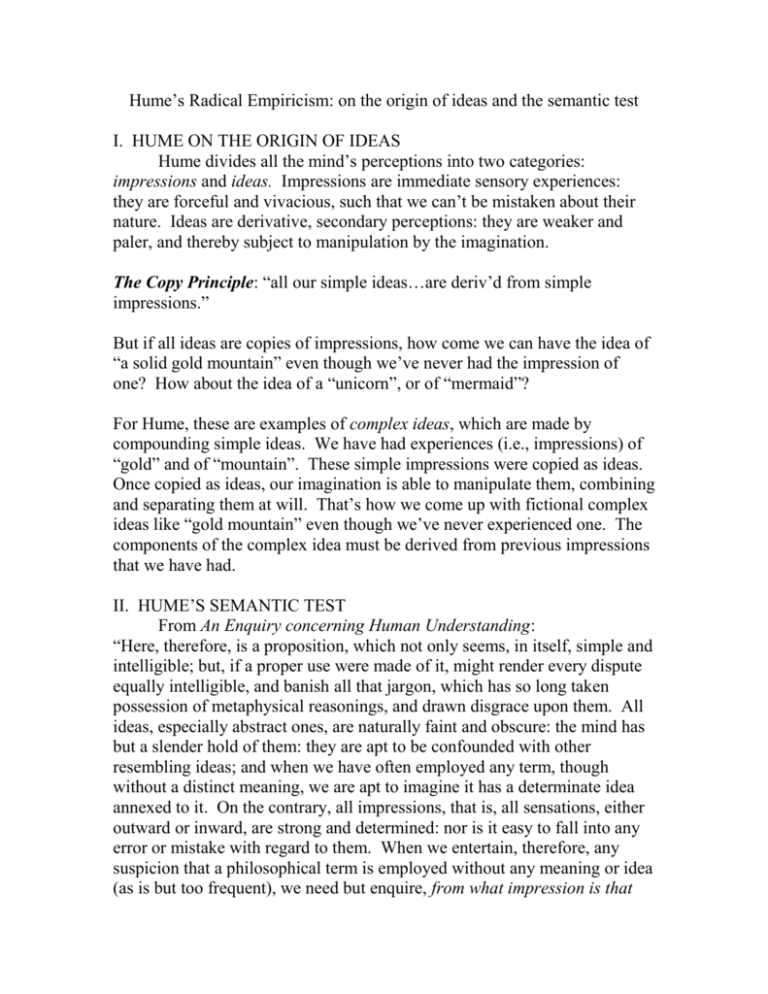
Hume’s Radical Empiricism: on the origin of ideas and the semantic test I. HUME ON THE ORIGIN OF IDEAS Hume divides all the mind’s perceptions into two categories: impressions and ideas. Impressions are immediate sensory experiences: they are forceful and vivacious, such that we can’t be mistaken about their nature. Ideas are derivative, secondary perceptions: they are weaker and paler, and thereby subject to manipulation by the imagination. The Copy Principle: “all our simple ideas…are deriv’d from simple impressions.” But if all ideas are copies of impressions, how come we can have the idea of “a solid gold mountain” even though we’ve never had the impression of one? How about the idea of a “unicorn”, or of “mermaid”? For Hume, these are examples of complex ideas, which are made by compounding simple ideas. We have had experiences (i.e., impressions) of “gold” and of “mountain”. These simple impressions were copied as ideas. Once copied as ideas, our imagination is able to manipulate them, combining and separating them at will. That’s how we come up with fictional complex ideas like “gold mountain” even though we’ve never experienced one. The components of the complex idea must be derived from previous impressions that we have had. II. HUME’S SEMANTIC TEST From An Enquiry concerning Human Understanding: “Here, therefore, is a proposition, which not only seems, in itself, simple and intelligible; but, if a proper use were made of it, might render every dispute equally intelligible, and banish all that jargon, which has so long taken possession of metaphysical reasonings, and drawn disgrace upon them. All ideas, especially abstract ones, are naturally faint and obscure: the mind has but a slender hold of them: they are apt to be confounded with other resembling ideas; and when we have often employed any term, though without a distinct meaning, we are apt to imagine it has a determinate idea annexed to it. On the contrary, all impressions, that is, all sensations, either outward or inward, are strong and determined: nor is it easy to fall into any error or mistake with regard to them. When we entertain, therefore, any suspicion that a philosophical term is employed without any meaning or idea (as is but too frequent), we need but enquire, from what impression is that supposed idea derived? And if it be impossible to assign any, this will serve to confirm our suspicion. By bringing ideas into so clear a light we may reasonably hope to remove all dispute, which may arise concerning their nature and reality.” Hume’s method for telling the difference between “metaphysical jargon” and meaningful claims: Can the idea be traced back to sensory experience? Is the idea derived from sensory experience? “From what impression is the supposed idea derived?” If we can answer these questions, then the idea has “empirical content”, and any disputes can, at least in theory, be resolved by established methods. If it is impossible to answer these questions, then the supposed idea or claim is meaningless (literally “senseless”). Disputes concerning such meaningless ideas are so much sound and fury signifying nothing. Obviously, we can make no claims to know what cannot even be understood.
